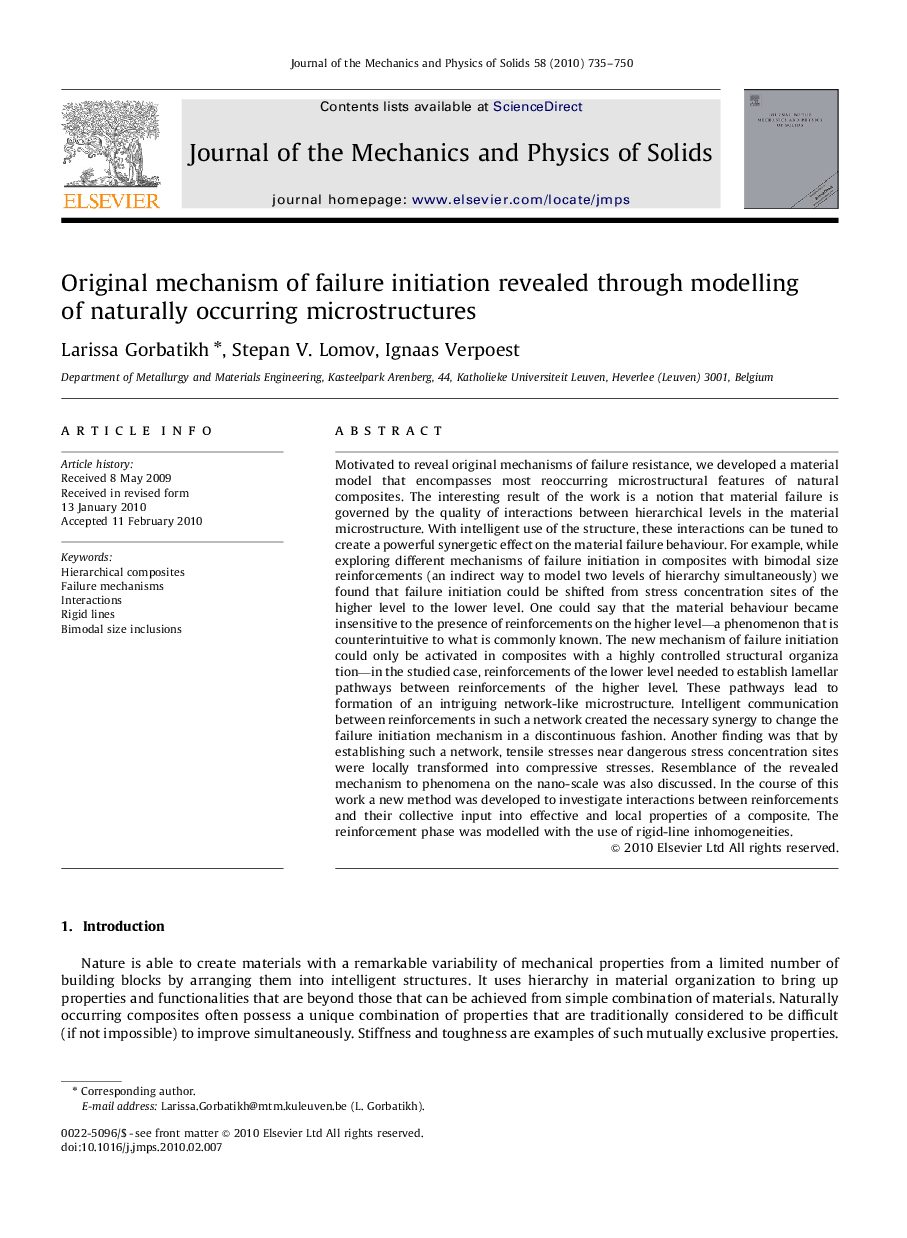| Article ID | Journal | Published Year | Pages | File Type |
|---|---|---|---|---|
| 799761 | Journal of the Mechanics and Physics of Solids | 2010 | 16 Pages |
Motivated to reveal original mechanisms of failure resistance, we developed a material model that encompasses most reoccurring microstructural features of natural composites. The interesting result of the work is a notion that material failure is governed by the quality of interactions between hierarchical levels in the material microstructure. With intelligent use of the structure, these interactions can be tuned to create a powerful synergetic effect on the material failure behaviour. For example, while exploring different mechanisms of failure initiation in composites with bimodal size reinforcements (an indirect way to model two levels of hierarchy simultaneously) we found that failure initiation could be shifted from stress concentration sites of the higher level to the lower level. One could say that the material behaviour became insensitive to the presence of reinforcements on the higher level—a phenomenon that is counterintuitive to what is commonly known. The new mechanism of failure initiation could only be activated in composites with a highly controlled structural organization—in the studied case, reinforcements of the lower level needed to establish lamellar pathways between reinforcements of the higher level. These pathways lead to formation of an intriguing network-like microstructure. Intelligent communication between reinforcements in such a network created the necessary synergy to change the failure initiation mechanism in a discontinuous fashion. Another finding was that by establishing such a network, tensile stresses near dangerous stress concentration sites were locally transformed into compressive stresses. Resemblance of the revealed mechanism to phenomena on the nano-scale was also discussed. In the course of this work a new method was developed to investigate interactions between reinforcements and their collective input into effective and local properties of a composite. The reinforcement phase was modelled with the use of rigid-line inhomogeneities.
